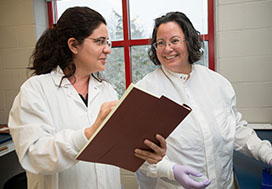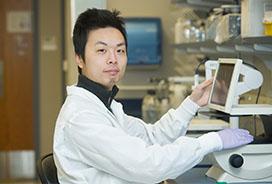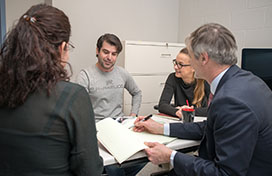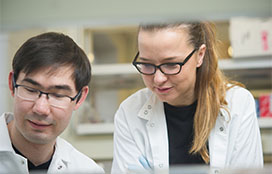Luis Schang, MV, PhD
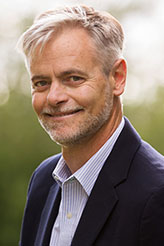
Baker Institute for Animal Health
Department of Microbiology and Immunology
Professor of Chemical Virology
Baker Institute for Animal Health
Baker Institute for Animal Health
235 Hungerford Hill Road
Ithaca, NY 14853
Department of Microbiology and Immunology
Cornell University College of Veterinary Medicine
Ithaca, NY 14853
Office: 607-256-5666
Email: lms428@cornell.edu
I am a molecular virologist interested in the interactions between viruses and cells, interactions which determine the outcomes of the infection and, consequently, pathogenicity. I am particularly interested in the commonalities among unrelated viruses. We identify small molecules that inhibit the infectivity or replication of multiple viruses and then use these compounds as probes to find commonalities among mostly unrelated viruses. This research answers fundamental questions on molecular virology while identifying biologically active small molecule scaffolds that may be developed as antivirals.
We have applied this approach mostly to viral entry and egress and the epigenetic regulation of viral replication and pathogenesis. Our group has identified new families of antiviral compounds that are active against multiple unrelated viruses (broad-spectrum antiviral activity). These compounds have novel targets and mechanisms of action, including the first antiviral molecules targeting virion envelope lipids. We have focused on a number of important pathogens, including herpes simplex virus 1 and 2 (HSV-1; -2), hepatitis C virus (HCV), or influenza A virus (IAV), and emerging viruses such as Zika virus (ZIKV).
Regarding epigenetics, I became interested early in my training in the effects of cyclin-dependent kinases on herpesvirus replication. This early work spearheaded the nowadays widely accepted concept of using cellular proteins as targets for antiviral drugs. Moreover, the finding that CDK inhibitors acted at an epigenetic level eventually led to the discovery that chromatin dynamics are altered in HSV-infected cells. We have shown that the interactions between histones and HSV-1 DNA result in unique nucleosome-like complexes, far more dynamic than the standard cellular nucleosomes, which regulate viral transcriptional competence. We continue analyzing the roles of chromatin dynamics in viral pathogenesis.
In 2005, we discovered that novel antiviral compounds interfered with the fusion of the virion envelope to the cell membrane, identifying in the process the first lipid-targeting antiviral molecules. These results also provided experimental evidence for the long-held view that the energy requirements for membrane bending during fusion pose a major barrier to infectivity. These studies resulted in a series of patents with priority date on 2007 (issued in 2014-2017), which are now licensed to a spinoff company that is analyzing potential commercialization
More recently, we found that a natural molecule, EGCG, inhibits attachment of viruses that bind to either sialoglycans and glycosaminoglycans. Virion protein binding to sialoglycan or glycosaminoglycan uses different mechanisms. We have thus focused on identifying the mechanism for this unexpected ability to inhibit attachment to the two types of glycans. We have embarked in a medicinal chemistry project, designing and synthesizing a number of novel chemical entities to test the requirements for inhibition of attachment to each type of glycan. We have also selected for resistance in viruses that attach to either sialoglycans or glycosaminoglycans. In a related project, we have identified molecules that inhibit specifically HCV cell-to-cell spread and used them to identify the actual mechanisms of HCV entry and egress in the infected liver.



